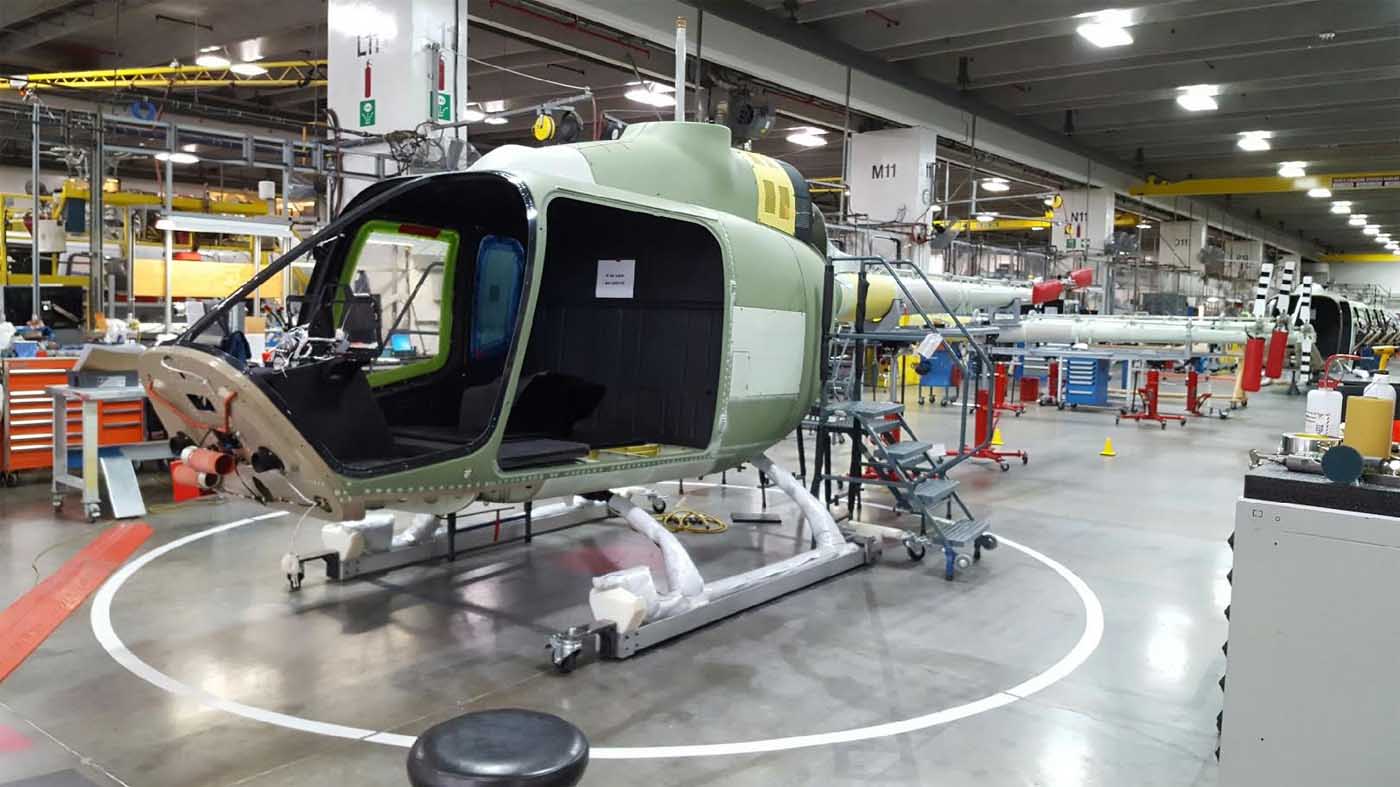A “very strong” commercial market has combined with supply chain challenges to result in demand outpacing supply at Bell, with delivery slots booked out for 2022, and 2023 quickly filling up.

“We thought [the commercial market] would be up, but it’s much, much stronger than we anticipated it would be,” Bell CEO Mitch Snyder told media during a briefing at the Farnborough International Airshow.
“Normally . . . you’re talking about how much percent you’re sold out in the year as you progress through the year,” he continued. “Early on this year, we were sold out for the year. Now, all the stats I’m monitoring is on how much we’re sold out for next year.”
The market strength is largely driven by demand in North America, he said, with Europe also a “somewhat strong” market.
The rebound in the market has hit at the same time as supply chain constrictions, which are being felt across the industry, he said. All the manufacturer’s commercial types are impacted.
While supply chain issues in the past were typically impacting bigger components, the current squeeze is broad.
“Normally, say, you have all these big components . . . things to build transmissions, rotor blades — that’s usually what’s hit you in the past [in terms of supply issues],” said Snyder. “But [now] there’s smaller things, where you’re just trying to get seats or other things that you wouldn’t normally think are in short supply, are showing up in short supply across the board.”
He said Bell is “working really hard” with its supply chain and constantly monitoring it to keep up with demand. Alternate sources are being explored, with some parts now dual sourced.
“It definitely requires a lot of work and management right now,” said Synder. “It’d be different if you were trying to keep [production numbers] going [at the same rate] but . . . at the same time the supply chain is struggling, we’re trying to ramp the supply chain.”
At Farnborough, Bell is heavily promoting the progress it is making with its Future Vertical Lift (FVL) military programs. It has a full-scale mockup of the V-280 Valor on display in its pavilion.
“There is significant international interest from a lot of our allies, a lot of our European allies, watching what’s happening with Future Vertical Lift,” said Keith Flail, executive vice president, advanced vertical lift systems at Bell. “[There has been] a lot of very good dialogue between us, between the DoD [Department of Defense], United States Army, and those nations.”
He said it was “a little bit too early to tell” what synergy there might be between FVL and programs like NATO’s Next Generation Rotorcraft Capability project.
“We’re showing what we’re working on and what we could potentially bring to the table for that,” said Flail. “Nothing’s finalized at this point, but I think the FLRAA selection will impact that conversation to a greater degree.”









